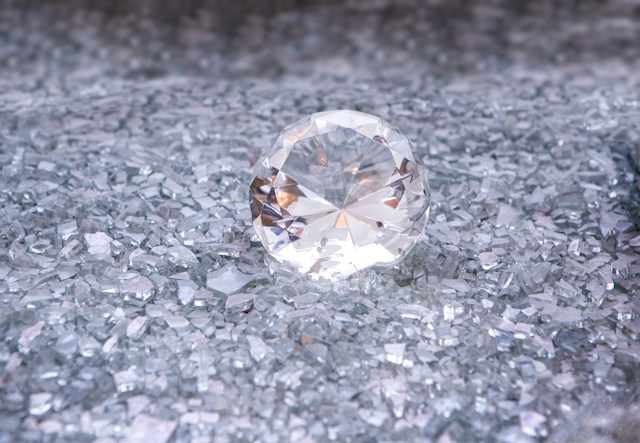Introduction:
Diamonds, the epitome of elegance and everlasting beauty, have fascinated humanity for centuries. Formed deep within the Earth under intense pressure and temperature, the journey of how diamonds are made is a tale of geological marvels that span millions of years. In this exploration, we embark on a fascinating journey through the geological processes that transform carbon into these dazzling gems, and the remarkable path diamonds take from their birthplace to adorning the most exquisite jewelry.
The Carbon Alchemy: The Building Blocks of Diamonds:
Carbon’s Transformation: At the heart of every diamond lies carbon – the same element that forms the basis of all life on Earth. However, the process that turns this ordinary carbon into the extraordinary substance that is diamond is anything but ordinary.
Carbon Allotropes: Carbon typically exists in various allotropes, including graphite and diamond. The key difference lies in the arrangement of carbon atoms. In diamonds, carbon atoms are arranged in a crystal lattice structure, a configuration that contributes to the gem’s exceptional hardness and brilliance.

Formation in the Earth’s Mantle: The Crucible of Extreme Conditions:
Depth and Pressure: Diamonds are formed in the Earth’s mantle, the layer located beneath the Earth’s crust. This region, characterized by extreme pressure and temperature conditions, provides the ideal environment for carbon atoms to undergo the metamorphic journey that results in the creation of diamonds.
Subduction Zones and Kimberlite Pipes: Diamonds often form in areas associated with tectonic activity, such as subduction zones. The transformation process begins when carbon-rich material is subjected to extreme pressure and transported to the surface through volcanic activity, typically via structures called kimberlite pipes.
The Role of Time: A Geological Ballet Spanning Millions of Years:
Slow Cooling: The journey from carbon to diamond is not a swift one. After the initial formation, diamonds require an extended period for the cooling of the surrounding rock. This slow cooling process is crucial for the diamond crystals to develop and stabilize.
Ages in the Making: Some diamonds have been estimated to be over a billion years old, providing a glimpse into the vast stretches of time involved in their creation. The interplay of geological forces, heat, and pressure transforms carbon into a gem that will withstand the test of time.

Diamonds Reach the Surface: The Extravagant Ascent:
Volcanic Eruptions: The ascent of diamonds from the depths of the Earth to the surface is a spectacle driven by volcanic forces. Kimberlite pipes, the conduits through which diamonds travel, bring these precious gems to the Earth’s crust during volcanic eruptions.
Alluvial Deposits: Once at the surface, diamonds can be found in alluvial deposits, often in riverbeds or areas where erosion has exposed these hidden treasures. The journey of a diamond from the mantle to a sparkling discovery on the Earth’s surface is a testament to the dynamic forces that shape our planet.
Diamond Mining: A Delicate Ballet of Precision and Responsibility:
Exploration and Prospecting: The search for diamond deposits involves meticulous exploration and prospecting. Advanced geological techniques, satellite imagery, and ground surveys aid in identifying potential areas for diamond mining.
Open-Pit and Underground Mining: Diamond extraction methods vary, with open-pit mining and underground mining being the primary approaches. Open-pit mining is used when diamond deposits are closer to the surface, while underground mining is employed for deeper deposits.
Environmental Considerations: Responsible diamond mining practices prioritize environmental sustainability and community well-being. Reclamation efforts, ethical labor practices, and minimizing the environmental footprint are integral to ensuring the long-term viability of diamond mining.

Diamond Cutting and Polishing: Crafting Brilliance from Rough Gems:
Artistry of Diamond Cutting: Once extracted, diamonds in their rough form undergo the meticulous art of cutting and polishing. Diamond cutters, often referred to as lapidarists, carefully study each gem’s unique characteristics to enhance its brilliance and overall aesthetic.
Precision and Expertise: The 4 Cs – cut, color, clarity, and carat weight – guide the cutting process. Achieving the perfect balance requires precision, expertise, and a profound understanding of the optical properties of diamonds.
Innovation in Diamond Cutting: Advancements in technology, including laser cutting and computer-aided design, have revolutionized the diamond cutting industry. These innovations enable lapidarists to maximize the beauty of each diamond while minimizing waste.
Certification and Traceability: Ensuring Quality and Ethical Sourcing:
Gemological Institutes: Diamonds are often certified by reputable gemological institutes, such as the Gemological Institute of America (GIA), to provide an objective assessment of their quality. Certification includes details on the 4 Cs and other characteristics, offering consumers confidence in their purchase.
Ethical Sourcing and Conflict-Free Diamonds: With growing awareness of ethical concerns in the diamond industry, initiatives such as the Kimberley Process Certification Scheme aim to ensure that diamonds are sourced responsibly and do not contribute to conflicts or human rights violations.
Emergence of Lab-Grown Diamonds: In response to environmental and ethical considerations, lab-grown diamonds have gained popularity as an alternative to mined diamonds. These diamonds are created through technological processes that mimic the conditions of the Earth’s mantle.
The Cultural Significance of Diamonds: Beyond Sparkle and Luxury:
Symbolism and Tradition: Diamonds have held profound cultural significance throughout history. They symbolize enduring love, purity, and strength, making them a popular choice for engagement rings and other meaningful jewelry.
Historical Treasures: Famous diamonds, such as the Hope Diamond and the Koh-i-Noor, have storied pasts and are often associated with royalty, wealth, and historical events. Their journeys through time add to the allure of these exceptional gems.
Diamonds in Modern Culture: Beyond their traditional roles, diamonds have become cultural icons, influencing fashion, art, and popular culture. Their timeless appeal continues to captivate people around the world.
Challenges and Innovations in the Diamond Industry:
Sustainability Challenges: The diamond industry faces challenges related to environmental impact, labor practices, and ethical concerns. Ongoing efforts seek to address these challenges through sustainable mining practices, responsible sourcing, and community engagement.
Technological Innovations: Advancements in technology, including blockchain, are being utilized to create transparent supply chains, allowing consumers to trace the journey of their diamonds from the mine to the market. These innovations contribute to a more accountable and ethical diamond industry.
Conclusion: The Radiance of Nature’s Masterpiece:
The journey of how diamonds are made is a remarkable saga that spans geological epochs, from the depths of the Earth to the elegance of a perfectly cut gem. Each diamond is not just a brilliant adornment but a testament to the Earth’s geological artistry and the intricate dance of forces that shape our planet. Whether sparkling in a jewelry store or passed down through generations, diamonds carry with them the story of their creation – a story that invites us to marvel at the wonders of our natural world.

